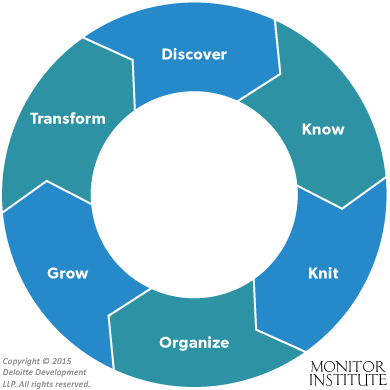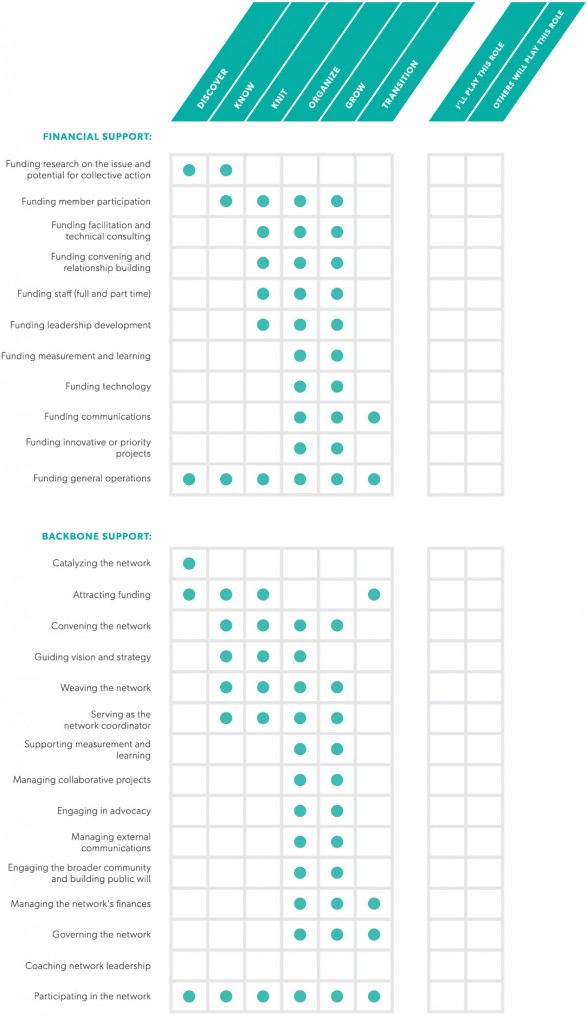Do you know what a network can help you achieve?
1. Can you tell if the challenge you’re trying to solve is a good fit for using a network?
The problem you are trying to solve…
- Has no single root cause and is connected to (or a symptom of) other problems
- Is emergent and shifting, defying silver-bullet solutions
- Could not be solved by any single organization, and lacks a clear or widely-agreed definition among the actors who could address it
- Cuts across the domains in which the actors typically work (e.g., governmental jurisdiction, issue focus, or industry sector)
And any progress towards a solution will require…
- The involvement of many actors, especially if they are from different sectors
- More resources or capacity than any one actor could provide
- A portfolio of interventions that work on many levers of change to address deep rooted causes
- Working beyond the scope of any of the relevant actors—such as changing policies, structures, or other elements of the social system that surrounds them
Review the section >>
2. Can you picture what network design would be most useful?
Review the section >>
3. Do you have a clear understanding of what a network could help you accomplish–and have you identified the specific functions that you need this network to perform?
Do you need a network to…
- Spur individual action
- Weave social ties
- Access new and diverse perspectives
- Facilitate information exchange and peer learning
- Create shared understanding in order to align action
- Design and prototype new solutions
- Launch a series of joint initiatives
Review the section >>
Do you know what you can do for a network?
4. Can you tell what general “type” of funding relationship you see yourself having with this network?
Are you the…
- Personally-Engaged Funder
- Roll-Up-the-Sleeves Funder
- Full-Spectrum Funder
Review the section >>
5. Do you know the network’s current stage of development?

Review the section >>
6. Do you know what forms of support you will provide?

Review the section >>
7. Are you and your organization both ready to adopt the mindset you need to do this work?
Can you…
- Find the common ground where your goals and the network’s goals intersect
- Be patient with the process and time required to support a community that can then work together to create impact
- Experiment and take risks with new ideas that spring from the collective
- Contribute as a collaborator and mitigate power dynamics
Review the section >>
8. Have you considered alternative forms of organizing to be sure that a network is the right approach?
Instead of a network, could you…
- Support a single individual / organization
- Create a new organization
- Gather a group
- Support a different kind of partnership
Review the section >>
Are you ready to get started?
9. Do you know how to gauge the potential for starting or joining a network?
Review the section >>
10. Do you know what tools you can use to support and lead a network?
Review the section >>


